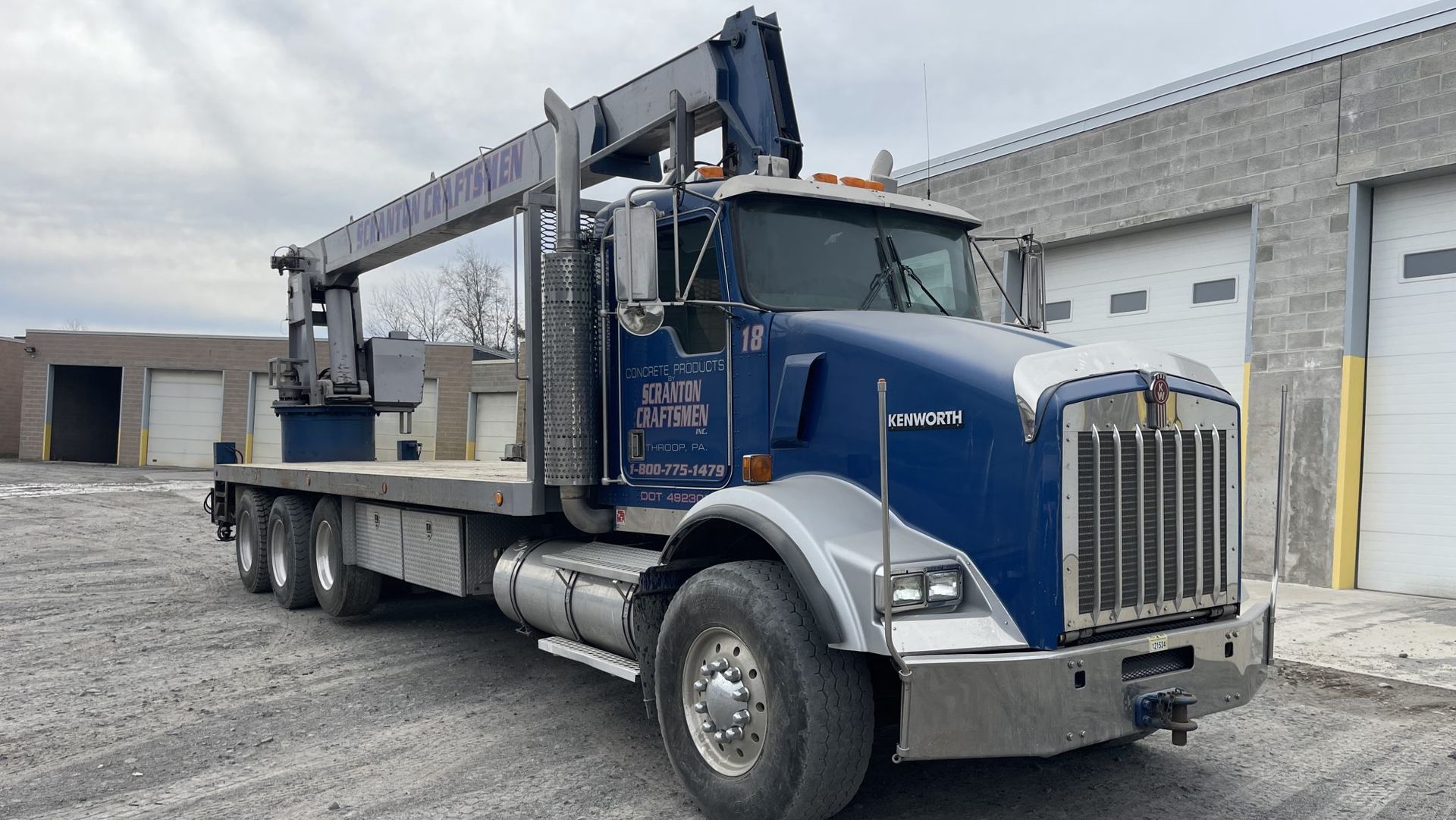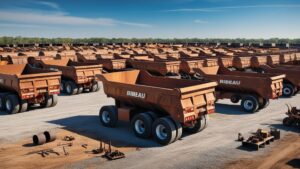Introduction
Hydraulic truck cranes are pivotal in the world of construction and heavy lifting, offering versatility, mobility, and significant lifting capacity. These cranes are mounted on trucks, making them highly mobile and capable of traveling on public roads. This article explores the detailed specifications, wide-ranging applications, and technological advancements of hydraulic truck cranes, underscoring their essential role in modern construction and industrial projects.
Key Specifications of Hydraulic Truck Cranes
Chassis and Mobility:
- Chassis: Built on robust truck chassis, designed to support heavy lifting and ensure stability during operations. The chassis is often reinforced to handle the stresses of lifting large loads.
- Mobility: Hydraulic truck cranes can travel on public roads, allowing them to move quickly between job sites. This mobility reduces setup times and increases operational efficiency.
Engine and Power:
- Engine: Typically powered by diesel engines, providing the necessary power to operate both the crane and the truck. Engine power ranges from 300 to 600 horsepower, depending on the crane’s size and lifting capacity.
- Hydraulic System: The core of the crane’s operation, the hydraulic system, includes pumps, motors, and cylinders that convert engine power into the lifting force. These systems are designed for efficiency, precision, and durability.
Boom and Lifting Capacity:
- Boom Type: Hydraulic truck cranes feature telescopic booms made of high-strength steel. These booms can extend to significant lengths, allowing for versatile lifting operations.
- Boom Length: Boom lengths can range from 30 feet to over 200 feet, with additional jib attachments available to increase reach.
- Lifting Capacity: Capacities vary widely, from 10 tons for smaller models to over 100 tons for larger cranes. This flexibility allows hydraulic truck cranes to handle a diverse range of lifting tasks.
Stability and Safety:
- Outriggers: Extendable outriggers provide stability during lifting operations. These outriggers are hydraulically operated and can be adjusted to ensure a level base on uneven terrain.
- Counterweights: Removable counterweights enhance stability by balancing the load during lifts. These are crucial for maintaining safety and preventing tipping.
- Safety Features: Modern hydraulic truck cranes include advanced safety systems such as load moment indicators, anti-two block systems, and overload protection to ensure safe operations.
Operator Cab and Controls:
- Operator Cab: Designed for comfort and visibility, operator cabs are equipped with ergonomic seats, climate control, and large windows. These features enhance operator comfort and safety.
- Controls: Hydraulic controls are intuitive and precise, allowing operators to make fine adjustments to boom position and load placement. Some cranes also feature remote control systems for enhanced operational flexibility.
Applications of Hydraulic Truck Cranes
Construction Industry: Hydraulic truck cranes are indispensable in the construction industry. They are used for a wide range of tasks, including lifting steel beams, concrete panels, and other heavy materials. Their mobility allows them to be quickly deployed to various parts of a construction site, facilitating efficient and timely project completion.
Infrastructure Projects: In infrastructure projects, hydraulic truck cranes play a crucial role in the erection of bridges, installation of pipelines, and placement of large pre-fabricated sections. Their ability to handle heavy loads and operate in tight spaces makes them ideal for urban infrastructure development.
Industrial and Manufacturing: Hydraulic truck cranes are used in industrial settings for equipment installation, maintenance, and relocation. They can lift and position heavy machinery, enabling factories and plants to upgrade or expand their operations without significant downtime.
Utility and Maintenance: Utility companies rely on hydraulic truck cranes for the installation and maintenance of power lines, transformers, and communication towers. The cranes’ ability to reach high elevations and handle heavy equipment makes them essential for maintaining infrastructure reliability.
Event and Entertainment Industry: Hydraulic truck cranes are also used in the event and entertainment industry for setting up stages, lighting, and large-scale installations. Their precision and lifting capacity ensure that event setups are safe and visually impressive.
Technological Advancements in Hydraulic Truck Cranes
Automation and Remote Control: Modern hydraulic truck cranes are increasingly equipped with automation features and remote control systems. These advancements allow operators to control the crane from a distance, enhancing safety and precision. Remote control systems are particularly useful in hazardous environments where operator safety is a concern.
Telematics and Fleet Management: Telematics systems provide real-time data on crane operations, including load weights, boom angles, and maintenance needs. Fleet managers can use this data to optimize operations, schedule maintenance, and improve overall efficiency. Telematics also enhances safety by monitoring crane performance and identifying potential issues before they become critical.
Eco-Friendly Innovations: With a growing focus on sustainability, manufacturers are developing hydraulic truck cranes with eco-friendly features. These include engines that meet stringent emission standards, hybrid power systems, and energy-efficient hydraulic systems. Such innovations reduce the environmental impact of crane operations and comply with increasingly strict environmental regulations.
Enhanced Safety Systems: Safety is a paramount concern in crane operations. Modern hydraulic truck cranes are equipped with advanced safety systems such as load moment indicators, which provide real-time data on the load’s weight and position. Anti-two block systems prevent the hook block from coming into contact with the boom tip, reducing the risk of accidents. Overload protection systems automatically shut down operations if the crane exceeds its safe lifting capacity.
Maintenance and Operational Considerations
Regular Maintenance: To ensure longevity and optimal performance, hydraulic truck cranes require regular maintenance. This includes routine checks of the hydraulic system, engine, transmission, and safety features. Regular lubrication of moving parts and inspection of hydraulic hoses and cylinders are essential to prevent failures and extend the crane’s lifespan.
Operator Training: Proper training for crane operators is crucial for safe and efficient operations. Training programs should cover crane setup, load handling, safety procedures, and emergency response. Well-trained operators can maximize the crane’s capabilities while minimizing risks to personnel and property.
Compliance with Regulations: Hydraulic truck cranes must comply with various regulations, including those related to safety, emissions, and roadworthiness. Operators and fleet managers should stay informed about local and national regulations to ensure compliance and avoid penalties. Regular inspections and certifications are necessary to maintain regulatory compliance.
Conclusion
Hydraulic truck cranes are versatile, powerful, and essential tools in modern construction, infrastructure, and industrial projects. Their mobility, lifting capacity, and advanced technology make them indispensable for a wide range of applications. With ongoing technological advancements, hydraulic truck cranes are becoming more efficient, safer, and environmentally friendly. Proper maintenance and operator training are essential to maximize their benefits and ensure safe, reliable operations. As industries continue to evolve, the importance of hydraulic truck cranes in supporting essential operations and promoting productivity will only grow.




